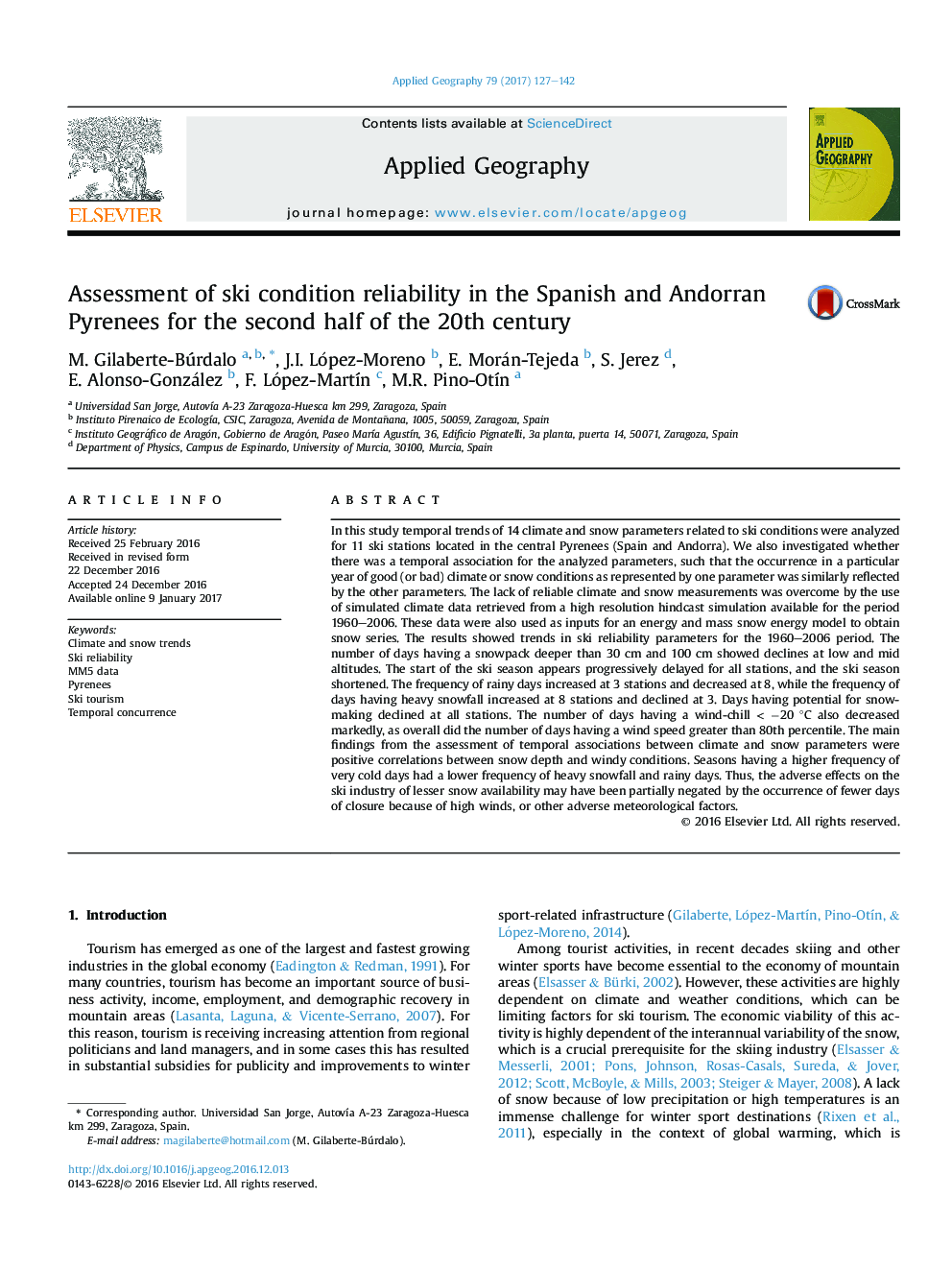| کد مقاله | کد نشریه | سال انتشار | مقاله انگلیسی | نسخه تمام متن |
|---|---|---|---|---|
| 6458433 | 1421038 | 2017 | 16 صفحه PDF | دانلود رایگان |
- MM5 model shows a good fit with observed data, especially for temperature and precipitation.
- Trends in climate and snow related variables were found in all ski stations.
- Ski stations located more inland and in a low m.a.s.l shown a major decrease in optimal conditions for skiing.
- Analysis shows that there were correlations among different climatic and snow variables.
In this study temporal trends of 14 climate and snow parameters related to ski conditions were analyzed for 11 ski stations located in the central Pyrenees (Spain and Andorra). We also investigated whether there was a temporal association for the analyzed parameters, such that the occurrence in a particular year of good (or bad) climate or snow conditions as represented by one parameter was similarly reflected by the other parameters. The lack of reliable climate and snow measurements was overcome by the use of simulated climate data retrieved from a high resolution hindcast simulation available for the period 1960-2006. These data were also used as inputs for an energy and mass snow energy model to obtain snow series. The results showed trends in ski reliability parameters for the 1960-2006 period. The number of days having a snowpack deeper than 30 cm and 100 cm showed declines at low and mid altitudes. The start of the ski season appears progressively delayed for all stations, and the ski season shortened. The frequency of rainy days increased at 3 stations and decreased at 8, while the frequency of days having heavy snowfall increased at 8 stations and declined at 3. Days having potential for snowmaking declined at all stations. The number of days having a wind-chill < â20 °C also decreased markedly, as overall did the number of days having a wind speed greater than 80th percentile. The main findings from the assessment of temporal associations between climate and snow parameters were positive correlations between snow depth and windy conditions. Seasons having a higher frequency of very cold days had a lower frequency of heavy snowfall and rainy days. Thus, the adverse effects on the ski industry of lesser snow availability may have been partially negated by the occurrence of fewer days of closure because of high winds, or other adverse meteorological factors.
Journal: Applied Geography - Volume 79, February 2017, Pages 127-142
